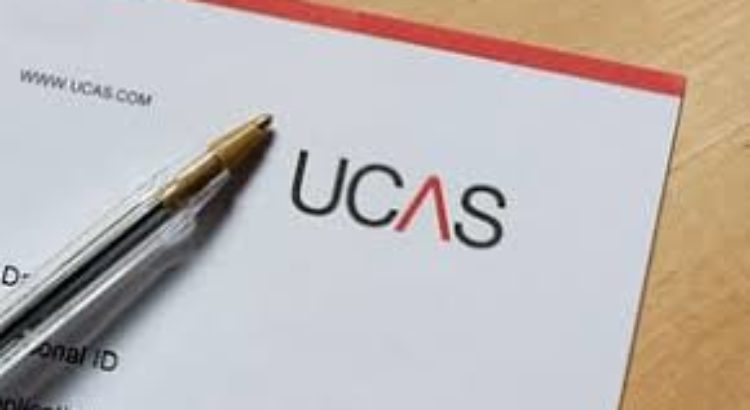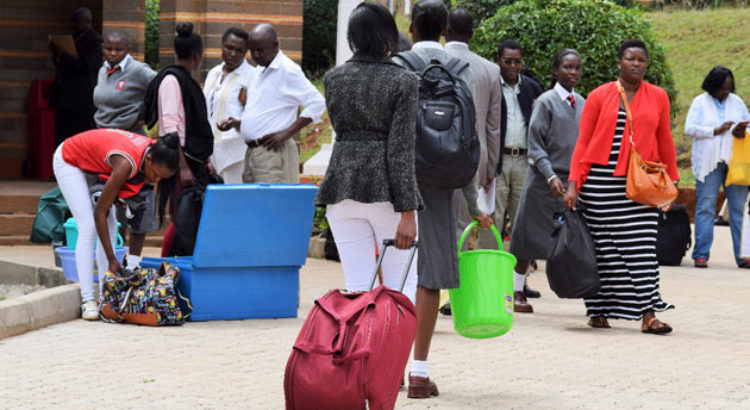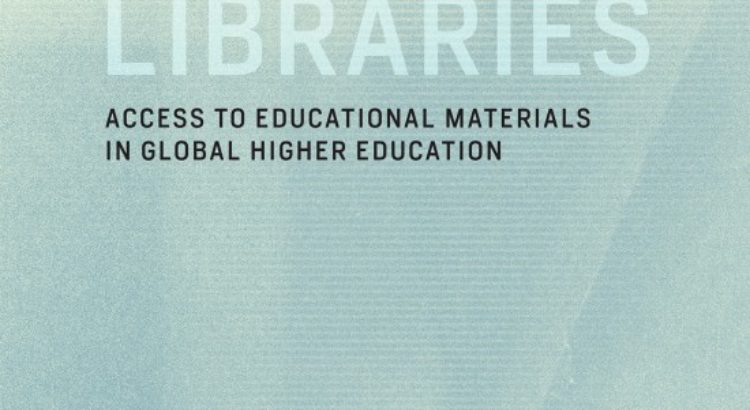Resumen: Examinar los nuevos ecosistemas de acceso que están surgiendo en los países de medianos y bajos ingresos a medida que se expanden las oportunidades para la educación superior, pero el financiamiento para los materiales se reduce. Incluso cuando los países de medianos y bajos ingresos amplían sus sistemas de educación superior, sus gobiernos se están retirando de la responsabilidad de financiar y administrar esta expansión. La provisión pública de materiales educativos en estos contextos es rara; en cambio, las bibliotecas, la facultad y los estudiantes están solos para obtener lo que necesitan. Shadow Librariesexplora el nuevo ecosistema de acceso, trazando el flujo de material educativo y de investigación de autores a editores, bibliotecas, estudiantes y universidades comparativamente ricas a las más pobres. En países de Rusia a Brasil, la debilidad de los modelos formales de acceso fue contrarrestada por el crecimiento de los informales. A principios de la década de 2000, la forma principal de acceso a los materiales era la copia informal y el intercambio. Desde entonces, archivos no autorizados como Libgen, Gigapedia y Sci-Hub se han convertido en «bibliotecas de sombras» globales, con agregaciones masivas de materiales académicos descargables. Los capítulos consideran los experimentos con acceso en una variedad de países de ingresos medios y bajos, describiendo, entre otras cosas, la tradición samizdat rusa y la conexión de la copia ilícita con la resistencia a la opresión; BiblioFyL, un archivo en línea construido por estudiantes de la Universidad de Buenos Aires; la política educativa y las prácticas diarias de los estudiantes en la Sudáfrica posterior al Apartheid; la política de acceso en India; y copiar cultura en Brasil.
higher education

UK: Ucas criticised over fraud screening of black applicants
Europa/ReinoUnido/theguardian.com/education
Resumen: El servicio de admisiones universitarias Ucas está bajo presión luego de que una investigación reveló que más de la mitad de todas las solicitudes marcadas por posible fraude son de estudiantes negros . Los investigadores de Ucas encontraron que durante un período de cinco años, el 52% de las solicitudes investigadas por posible actividad fraudulenta provenían de candidatos negros, a pesar de que solo representaban el 9% del total de las solicitudes. Por el contrario, en el mismo período, entre 2013 y 2017, solo el 19% de todas las solicitudes sospechosas provenían de estudiantes blancos, a pesar de que representan el 73% de todas las solicitudes. Los estudiantes asiáticos constituyen el 11% de los solicitantes y el 16% de los que están marcados. Ucas llevó a cabo su investigación luego de que el Independent le pidiera libertad de información aprincipios de este año y señaló que era mucho más probable que el proceso de investigación de fraude en las solicitudes universitarias exigiera pruebas de los reclamos de los solicitantes negros que los blancos. Esa solicitud se centró en las cifras de 2017, pero la investigación posterior de Ucas muestra el mismo patrón en un período de cinco años, con un total de 2.675 solicitantes de raza negra que se marcan de una población de 260.550 solicitantes. De las solicitudes de 2,1 millones de estudiantes blancos durante el mismo período, se marcaron 995. Alrededor del 40% de las solicitudes marcadas fueron canceladas por Ucas, una cifra ampliamente proporcional a los porcentajes marcados en cada grupo étnico. La directora ejecutiva de Ucas, Clare Marchant, dijo que la investigación había demostrado que las solicitudes solo se cancelaban cuando había pruebas claras de fraude o falta de información. Pero dijo que «hay más trabajo para que hagamos para asegurarnos de que el marcado sea lo más sólido posible en todas las áreas del servicio de verificación». Ucas necesita … satisfacer a los estudiantes de las minorías étnicas para que sus solicitudes se consideren de manera justa .Una de las áreas de debilidad potencial identificada por Ucas fue el software de detección de fraudes estándar de la industria que implementa como un método de selección de aplicaciones. Utiliza una acumulación de datos históricos como referencia que puede haber contribuido a los resultados. Ucas dijo que ya se hicieron mejoras al servicio de detección de fraude. También prometió introducir una revisión adicional de todas las aplicaciones antes de la cancelación para evitar errores y dijo que aseguraría que todo el personal tenga un entrenamiento de sesgo inconsciente actualizado. El ex ministro de Educación y diputado laborista David Lammypidió una mayor transparencia en el proceso de admisión a la universidad. «Ucas necesita explicar por qué más de la mitad de todos los solicitantes señalados son negros, a pesar de que los estudiantes negros representan solo una de cada 10 solicitudes», dijo. «Ucas necesita poder explicar esta enorme desproporcionalidad y satisfacer a los estudiantes de minorías étnicas para que sus solicitudes se consideren de manera justa
The university admissions service Ucas is under pressure after an investigation revealed that more than half of all applications flagged for possible fraud are from black students.
Ucas researchers found that over a five-year period 52% of applications investigated for potential fraudulent activity were from black candidates, even though they only make up 9% of total applications.
In contrast, over the same period – between 2013 and 2017 – just 19% of all suspicious applications were from white students, even though they make up 73% of all applications. Asian students made up 11% of applicants and 16% of those flagged.
Ucas conducted its investigation after a freedom of information request by the Independent earlier this year indicated the process for investigating fraud in university applications was far more likely to demand proof of claims from black applicants than white ones.
That request focused on figures for 2017, but Ucas’s subsequent investigation shows the same pattern over a five-year period, with a total of 2,675 black applicants being flagged out of an applicant population of 260,550.
Out of 2.1m applications from white students over the same period, 995 were flagged. Around 40% of flagged applications were cancelled by Ucas, a figure broadly proportionate to the percentages flagged in each ethnic group.
Ucas’s chief executive Clare Marchant said the investigation had shown that applications were only being cancelled where there was clear evidence of fraud or missing information. But she said “there is more work for us to do to ensure that flagging is as robust as it can be across all areas of the verification service.”
One of the areas of potential weakness identified by Ucas was the industry standard fraud detection software it deploys as one method of screening applications. It uses an accumulation of historic data as a reference that may have contributed to the results.
Ucas said enhancements had already been made to the fraud detection service. It also promised to introduce an additional review of all applications prior to cancellation to avoid errors and said it would ensure that all staff had up-to-date unconscious bias training.
The former education minister and Labour MP David Lammy called for greater transparency in the university admissions process. “Ucas need to explain why over half of all flagged applicants are black, despite black students accounting for just one in 10 applications,” he said.
“Ucas needs to be able to explain this huge disproportionality and satisfy students from ethnic minorities that their applications will be looked upon fairly.”
Overall the total number of university applications flagged for further investigation was small – out of 2.9 million applicants over the past five years 5,160 applications were flagged, of which just over 2,000 were then cancelled.
The screening process was designed to spot fake qualifications, plagiarised personal statements and inaccurate information which could give would-be students an unfair advantage. In all the screening systems used Ucas insisted ethnicity and nationality played no part.
Lammy, who has campaigned on this issue, said: “I have long been concerned about the lack of transparency in our admissions process as a result of Ucas refusing to publish all of its access data openly.
“This is clearly a necessary change so that we can fully understand what is going on within our university admissions process across the board.” Ucas has since said that figures on its verification service would now be published annually.
A Department for Education spokesman said any bias against people due to their ethnicity or background was completely unacceptable and welcomed the Ucas investigation.
“We have seen record entry rates at universities across all ethnic groups, but we recognise there is more to do. We have introduced sweeping reforms through the Higher Education and Research Act requiring all universities to publish applications, offers and acceptance rates broken down by gender, ethnicity and socioeconomic background.”
Fuente:https://www.theguardian.com/education/2018/may/31/ucas-criticised-over-screening-of-black-applicants

Sweden Cancels Agreement With Elsevier Over Open Access
Europa/Suiza/the-scientist.com
Resumen: Una colección de universidades e instituciones de investigación suecas no renovará su contrato actual con Elsevier, que expira a fines de junio,informa Times Higher Education hoy (16 de mayo). La medida no llega mucho después de que las instituciones académicas de otros países hayan dejado que las suscripciones de las editoriales caduquen cuando las negociaciones de tarifas lleguen a un callejón sin salida. «El sistema actual de comunicación académica debe cambiar, y nuestra única opción es cancelar acuerdos cuando no cumplan con nuestras demandas de una transición sostenible hacia el acceso abierto», explica Astrid Söderbergh Widding, presidenta de la Universidad de Estocolmo y presidenta del consorcio. OpenAccess.se , un blog publicado por la Biblioteca Nacional de Suecia. Según el blog, el Consorcio Bibsam, que representa a 85 instituciones de educación superior e investigación en el país, solicitó que Elsevier permitiera a los investigadores de las instituciones publicar su trabajo en formatos de acceso abierto y recibir acceso de lectura a todos los artículos de revistas del editor. El consorcio también quería que el editor se comprometiera con una estructura de precios que alentaría la transición al acceso abierto. En 2017, los miembros del consorcio gastaron € 12 millones ($ 14.2 millones USD) en tarifas de licencia para que los investigadores lean el contenido de Elsevier y otros € 1.3 millones ($ 1.5 millones USD) se gastaron en cargos por procesamiento de artículos, informa OpenAccess.se, notando que los investigadores publican alrededor de 4.000 artículos por año en las revistas Elsevier. Después de que el contrato finalice el mes próximo, los investigadores tendrán acceso a artículos publicados entre 1995 y 2017, pero nada publicado después del 30 de junio de 2018. El consorcio ha aconsejado a los investigadores interesados en estudios publicados después de la fecha de finalización del contrato «buscar versiones de acceso abierto documentos, contactar a los autores directamente para obtener una copia o considerar un préstamo entre bibliotecas «, según Times Higher Education .Otros países, sin embargo, han tenido más éxito en la creación de acuerdos de acceso abierto. Más recientemente, los Países Bajos crearon suscripciones que combinan la publicación y el acceso a la lectura en una sola tarifa
A collection of Swedish universities and research institutions will not renew its current contract with Elsevier that expires at the end of June, Times Higher Education reports today (May 16). The move comes not long after academic institutions in other countries have let publishers’ subscriptions lapse when fee negotiations come to an impasse.
See “French Universities Cancel Subscriptions to Springer Journals”
“The current system for scholarly communication must change, and our only option is to cancel deals when they don’t meet our demands for a sustainable transition to open access,” Astrid Söderbergh Widding, president of Stockholm University and chair of the consortium, tells OpenAccess.se, a blog published by the National Library of Sweden.
According to the blog, the Bibsam Consortium, representing 85 higher education and research institutions in the country, had requested that Elsevier allow researchers at the institutions to publish their work in open access formats and receive reading access to all of the publisher’s journal articles. The consortium also wanted the publisher to commit to a pricing structure that would encourage the move to open access.
In 2017, the consortium’s members spent €12 million ($14.2 million USD) on licensing fees for researchers to read Elsevier content and another €1.3 million ($1.5 million USD) was spent on article-processing charges, OpenAccess.se reports, noting that Swedish researchers publish around 4,000 articles per year in Elsevier journals.
After the contract ends next month, researchers will have access to articles published between 1995 and 2017 but nothing published after June 30, 2018. The consortium has advised researchers interested in studies published after the contract termination date to “search for open-access versions of papers, to contact authors directly for a copy, or to consider an inter-library loan,” according to Times Higher Education.
Other countries, however, have been more successful in creating open-access agreements. Most recently, the Netherlands created subscriptions that combine publishing and reading access into a single fee.
Fuente: https://www.the-scientist.com/?articles.view/articleNo/54593/title/Sweden-Cancels-Agreement-With-Elsevier-Over-Open-Access/

EEUU: Michigan’s floundering education system has left its children far behind
EEUU/May 22, 2018/Source: http://www.mlive.com
There’s no way around it: Michigan’s education system is floundering.
From early literacy to middle-school math, Michigan students are not keeping up with their peers in top-performing states.
Big changes are needed if Michigan wants to turn itself around, experts say.
«Michigan, if it thinks the status quo is going to be fine, we’ll have a race to the bottom, and we’re almost there right now,» said Grand Valley State University President Thomas Haas, who chaired Gov. Rick Snyder’s 21st Century Education Commission, a panel that developed recommendations to improve Michigan’s education system.
Perhaps no issue is more important for Michigan’s future: In a global economy, a well-educated workforce is critical – and an area where Michigan lags behind.
It starts with reaching and educating Michigan school children even earlier than kindergarten. That means providing more families with affordable access to high-quality early childhood education and funding K-12 schools based on student need, experts say.
It also means ensuring all children have access to top-notch teachers and boosting the number of residents with college degrees or certificates in areas such as the skilled trades.
The relatively low numbers of college graduates and people with post-secondary training mean good jobs here can go begging. The state’s fast-growing occupations are those that require post-secondary training. In 2016, 2 percent of Michigan adults with a bachelor’s degree were unemployed compared to 7 percent of those with only a high school diploma.

Low rates of educational attainment means stagnating wages and tax bases that stifle economic growth. It means Michigan is less competitive in recruiting new employers. A major reason Detroit wasn’t a finalist in the new Amazon Headquarters was that the region didn’t have the talent pool needed for the jobs.
It hurts individuals. It hurts entire communities.
«It’s really about our vitality in every aspect for the future in our state,» said Amber Arellano, executive director of The Education Trust-Midwest, a nonpartisan education policy and research group. «It’s whether you want to stay here and raise your kids.»
In a series that began in April, MLive is taking a hard look at Michigan’s biggest challenges – our economy, education system and infrastructure – from the historical importance, to how we got where we are today, to possible solutions.
We’ll use the series to frame our discussion with candidates as we head into the 2018 midterm elections and choose Michigan’s newest leaders.
This month, we’re taking a deep dive into Michigan’s educational pipeline.
K-12 schools
Michigan students are below the national average in federal test scores, in graduating high school in four years and in college enrollment.
* Michigan ranked 36th in fourth-grade reading proficiency in the most round of the National Assessment of Educational Progress tests.
* About 80 percent of Michigan’s Class of 2017 graduated high school in four years compared to a national average of 84 percent.
*Not quite 32 percent of Michigan adults age 25 to 34 have a bachelor’s degree compared to 35 percent in that age group nationwide.
And that’s after Michigan has spent the past two decades rolling out various strategies to improve Michigan’s schools.
Michigan has opened the door to school choice and charter schools. Rigorous high school graduation requirements have been implemented. High-stakes testing has been adopted. Teacher tenure laws have been reformed. And a now-defunct state-reform district was created.
Some of those efforts, such as high academic standards, are important and should stay in place, experts say. But overall, they have not pushed the needle in student achievement.
What’s needed, education leaders say, is transformational change.
That includes an overhaul of the school-funding formula, according to the School Finance Research Collaborative, a coalition of educators, nonprofits and philanthropic groups.
Michigan isn’t providing adequate funding for K-12 education, and policymakers must take into greater account the needs of each child, the collaborative said in a January 2018 report.
About half of Michigan students qualify for the subsidized lunch program, and there’s a huge academic achievement gap between those children and students from middle-class and affluent families.
Closing that gap requires more support services: more tutoring and specialized instruction, more after-school programs, more summer school. Michigan’s funding formula needs to reflect those costs, the collaborative says.
Another big issue: Getting more experienced, high-quality teachers in Michigan’s most troubled school districts.
Right now, Michigan’s best teachers tend to gravitate to more affluent districts where the pay tends to be much better and the public support is much greater.
But that shortchanges students in high-poverty communities most in need of skilled, experienced teachers.
Birth to age 5
Another recommendation of the governor’s commission: give more families access to high-quality, early childhood education.
That means offering all 4-year-olds access to state-funded preschool, and helping more families pay for quality childcare for children ages birth to three, educators and advocacy groups say. Currently, slightly less than half of Michigan 3- and 4-year-olds attend a pre-K program, according to Census data.
«People can’t afford or don’t have access to quality child care in their communities,» said Matt Gillard, president and CEO of Michigan’s Children, which advocates for services for low-income families. «This is a huge challenge right now.»
Research shows that 90 percent of brain development occurs in the first five years of life, which means birth-to-5 services offer the best bang for the buck for improving academic outcomes.
Higher education
Investments are crucial in higher education, too.
By 2020, about two-thirds of jobs are expected to require training beyond high school, whether that be a college degree or an associate degree or certificate in areas such as advanced manufacturing or information technology.
Yet Michigan lags in the number of college graduates and people with post-secondary training. About 28 percent of Michigan adults age 25 and older have a bachelor’s degree, compared to a national average of 31 percent.
Boosting Michigan’s number is key if the state wants to lure employers to the state and ensure that residents have the skills needed to land good, high-paying jobs, said Lou Glazer, president of Michigan Future Inc., a nonprofit organization focused on improving the state’s economy.
«The choice is increase college attainment or permanently be one of the poorer states in the country,» Glazer said. «That’s the stakes.»
Over the course of the next several months, MLive will explore issues of economy, education and infrastructure, and what Michigan leaders need to do to create a better future. We’d love to hear from you, about your struggles and your wins, as you navigate Michigan’s economic landscape. We want to use your voice and your questions to frame the conversation with candidates as we head into midterm elections. Have a story to share, send us an email to michiganbeyond@mlive.com
Source:
http://www.mlive.com/news/index.ssf/2018/05/michigan_beyond_education.html

Jamaica: Gov’t Looking to Create Integrated Higher Education System
Jamaica/ May 15, 2018/By Rochelle Williams/Source: http://jis.gov.jm
The Government is looking to create an Integrated Higher Education System for Jamaica (IHES-J) aimed at better aligning training to industry demands.
Portfolio Minister, Senator the Hon. Ruel Reid, made the disclosure while addressing the opening of the Ministry’s inaugural Higher Education Summit on May 10 at the Jamaica Pegasus Hotel in New Kingston.
“This integration is expected to be supported with policies and systems to support greater autonomy, greater alignment to industry and a flexible approach to funding to support the needs of the institutions, while ensuring that students are being trained in areas that are required by industry and will ultimately impact the economy,” he said.
He said that despite deliberations over the years, limited progress has been made in addressing the need for greater integration of education and training.
“Our hope is that coming out of these discussions (at the summit) we will be able to agree on the needed and significant steps forward together,” he said.
The two-day summit, under the theme: ‘Education 4.0: Disrupting Tradition…Transforming Jamaica,’ provided a platform for stakeholders to discuss and provide feedback on a number of issues critical to the development of the higher education sector.
From the consultations, the Ministry will seek to establish a declaration, which will encapsulate the core principles around which the Government will be able to define and pass legislation with regards to matters of governance, quality assurance and regulation of higher education.
In his address, Senator Reid highlighted the importance of higher education to the development of the country.
He said that among the national imperatives are: to increase the percentage of eligible cohort holding the minimum of a bachelor’s degree from 15 per cent to 80 per cent; remove barriers to access; and ensure that institutions are responsive to the changing dynamics and requirements of the labour market.
Permanent Secretary in the Ministry, Dean-Roy Bernard, in his contribution, stressed that a key objective of the deliberations is to ensure that higher education is supporting the economic growth agenda.
“We hear many times of the 67 per cent of our workforce that are untrained and uncertified. This summit is to ensure that we are reducing those numbers rapidly,” he said.
Over the two days, experts in education and industry made presentations on a range of topics including: ‘Higher Education, Governance and the Oversight Framework’; ‘Autonomy within the Higher Education Sector’; ‘Funding the Higher Education Sector’; and ‘Relevance, Innovation and Leadership.’
Among those in attendance were members of external quality assurance body, University Council of Jamaica (UCJ); regulatory body, Jamaica Tertiary Education Commission (J-TEC); the Council of Community Colleges of Jamaica (CCCJ) and their member institutions; and student representatives
Source:
http://jis.gov.jm/govt-looking-to-create-integrated-higher-education-system/

KENYA Falling student numbers – A shift in the High Education landscape
Africa/Kenia/.universityworldnews.com
Resumen: Los inversores privados y el gobierno de Kenia están mirando millones de dólares en pérdidas ya que varias universidades registran una caída en el número de estudiantes, dejando a las universidades con una capacidad subutilizada significativa. Los datos de la encuesta publicados por el Ministerio de Educación del país recientemente indican que la mayoría de las universidades están luchando para atraer a los estudiantes a tomar algunos cursos bajo el programa regular financiado por el estado. Para empeorar las cosas, todos los estudiantes que se inscribieron anteriormente para los lucrativos cursos de auto patrocinado ahora están siendo absorbidos por el programa regular. Desde el año pasado, el número de candidatos exitosos que se gradúan de las escuelas secundarias ha disminuido sustancialmente después de que el gobierno endureció las reglas de examen para eliminar a miles de tramposos que se habían beneficiado a lo largo de los años de un sistema de supervisión descuidado. En términos de una directiva del gobierno emitida a comienzos de este año, las universidades públicas deben absorber directamente a todos los que abandonan la escuela secundaria y obtienen una calificación promedio de C + y superior. Los que están por debajo del límite ya no podrán inscribirse en los grados. Esto es una desviación del pasado cuando tenían la opción de ingresar a las universidades como estudiantes con financiación privada.
Private investors and the Kenyan government are staring at millions of dollars in losses as several universities record falling student numbers, leaving universities with significant underutilised capacity.
Survey data released by the country’s Ministry of Education recently indicate that a majority of universities are struggling to attract students to take up some courses under the state-funded regular programme. To make matters worse, all the students previously enrolling for the lucrative self-sponsored courses are now being absorbed under the regular programme.
Since last year, the number of successful candidates graduating from secondary schools has fallen substantially after the government tightened examination rules to weed out thousands of cheaters who had over the years taken advantage of a sloppy monitoring system.
In terms of a government directive issued at the beginning of this year, public universities are to directly absorb all secondary school leavers who score a mean grade of C+ and above. Those below the cut-off will no longer be allowed to enrol for degrees. This is a departure from the past when they had the option of entering universities as privately-funded students.
The state, through the sector regulator the Commission for University Education, also barred universities from offering bridging courses, often taken by students who lacked sufficiently high grades to qualify for degree courses.
The changes have significantly drained universities of potential students, raising questions over the viability of costly expansion projects embraced by several higher education institutions over the past few years.
Statistics show that slightly fewer than 70,000 students qualified to join universities this year after attaining the requisite grades in the 2017 secondary examinations. Previously, at least half of these students were joining universities under the self-sponsored programmes while an equal number would be enrolled for regular courses. The number of those joining public universities is at least 18,000 lower than in 2017.
Of the qualified candidates, only 62,851 have expressed an interest in joining universities this year, which suggests that over 7,000 students have opted not to enrol in any of the available courses.
Data released recently by the Kenya Universities and Colleges Central Placement Service (KUCCPS) – the body that places qualified students in universities – show that universities had at least 132,686 slots available in 2018.
According to the data, one private university that had declared capacity for 50 students failed to attract a single one; another institution, which expressed interest in admitting at least 400 students, only received eight applicants; one of the newly-established constituent colleges, formed under the older public universities, attracted only four students in total; and a total of 14 of the universities vying for the available students attracted under 50 students.
Educationists are justifiably concerned about the sustainability of Kenya’s higher education system and predict it is set for a major restructuring.
“Many universities face a bleak future because they cannot attract students and may not survive if the trend continues. Even those that do survive will have to scrap several courses that have turned out to be unpopular and irrelevant,” said David Aduda, a Nairobi-based educationist.
“What is emerging is that university education was built on quick sand. The exponential growth witnessed in the past 20 years was a mirage. It was not based on fundamentals. Now the chips are falling in place and the reality is that the country may not require so many universities after all,” he wrote in a blog in the leading Daily Nation newspaper.
The situation was not entirely unforeseen. Recently, as reported by University World News, government asked for a policy review that will see the rationalisation of institutions. In terms of the review, Education Cabinet Secretary Amina Mohamed directed the commission to justify the existence of the 74 universities in the country and asked all universities to defend their academic programmes and provide evidence of staffing levels.
“In the recent past, the quality of university education in Kenya has been under scrutiny, attracting great public attention. The time has come for drastic and bold steps to be taken to revive the university education sub-sector. This may be a painful, but inevitable, process for the growth and development of the sub-sector,” said Mohamed in March.
“There have been complaints from the public that are indicative of the failure of universities to provide a conducive learning environment for students to excel in their fields of study, produce graduates who have the knowledge, skills, attitudes and competencies needed for the world of work; and drive the national development agenda,” she said.
The data from the KUCCPS paints a dire picture in respect of course choices. There is growing disinterest in skills that were previously identified as key drivers of the county’s economic agenda. In most of the universities, courses related to agriculture, horticulture, food science and technology and environmental studies received the lowest number of applicants. There was also a general neglect of courses in social sciences.
The changing dynamics in the higher education sector is beginning to raise questions over the millions of dollars being pumped into universities annually.
For the coming financial year which begins in July, the National Treasury has allocated US$1.03 billion to the institutions of higher learning, up from US$961 million in the current fiscal year. This is the first time the allocation has crossed the billion dollar mark, raising hopes of increased funding in the coming years.
However, the amount is US$300 million lower than the amount the universities requested, according to budget documents released by the government. Funding is projected to rise to US$1.3 billion by 2020. Treasury, which funds a huge part of the public universities’ budgets, has over the years either cut allocations or failed to meet institutions’ needs.
Analysts believe that the declining student numbers will discourage investors who were previously falling over each other for opportunities in the sector. Kenya is seeking over US$200 million from foreign and local private investors to help build hostels in three public universities this year. The Treasury has called for potential bidders to present proposals to add 30,000 extra bed spaces across three of the country’s institutions: South Eastern Kenya University, Embu University College and Moi University.
For now, only time will tell the direction the country’s higher education sector will take.

Big data could be key to Africa’s graduate employability
Africa/universityworldnews
Resumen: En todo el continente africano, la educación superior está ampliando su alcance, tanto en términos de cantidad como de calificaciones. Al mismo tiempo, las universidades subsaharianas enfrentan enormes desafíos para mejorar la calidad y la relevancia. Hay muchas razones para esto: lo más importante es la cuestión de la falta de datos confiables y útiles sobre la base de los cuales planificar, supervisar y revisar. Hacer frente a este problema requiere una atención meticulosa a los detalles, la capacidad analítica, el aprendizaje adecuado o las plataformas estadísticas y el apoyo de gestión de alto nivel. Es importante destacar que también se considera que necesita un aporte financiero continuo y significativo. Por lo tanto, es particularmente interesante observar el progreso de un pequeño proyecto piloto que promete desafiar algunos de los factores que limitan la capacidad de las universidades del África Subsahariana para unirse al juego de «grandes datos». El proyecto, dirigido por el British Council, persigue dos objetivos: (i) realizar una encuesta de salida de postgrado sobre estudiantes graduados de Bachelor of Pharmacy de tres universidades importantes de la región (las universidades de Ghana, Lagos y Western Cape), y al mismo tiempo (ii) probar el potencial de los teléfonos móviles para la recopilación de datos.
Addressing this problem requires meticulous attention to detail, analytical capacity, adequate learning or statistical platforms and high-level management support. Importantly, it is also viewed as needing ongoing and significant financial input.
It is therefore particularly interesting to note the progress of a small pilot project that promises to challenge some of the constraining factors militating against Sub-Saharan African universities’ ability to join the ‘big data’ game.
The project, run by the British Council, seeks to achieve two aims: (i) to conduct a graduate exit survey on graduating Bachelor of Pharmacy students from three major universities in the region (the universities of Ghana, Lagos and the Western Cape), and at the same time (ii) to test the potential of mobile phones for data collection.
The first aim has intrinsic interest, given the significant curriculum developments in the field that impact on the role of pharmacists in national health systems. Graduate exit surveys also provide important information about the kinds of jobs students obtain after graduation – for example, how long it takes them to find a job, what resources they employed to do so, who is employing them (including self-employment) and this helps institutions to build long-term, mutually beneficial relationships with employers.
Rolling out the survey
Plans are under way to roll out the graduate exit survey project from the small, highly specialised field of pharmacy to a very large qualification such as the Bachelor of Commerce (or Administration), and to a higher number of universities. This will allow the approach to be fully tested.
At the same time, another higher education project in Sub-Saharan Africa is working on the provision of capacity development programmes for senior professional staff in universities. The four priority topics identified in the regional needs analysis workshops held to date include the capacity to work with data as a planning, monitoring and developmental tool for universities. It is envisaged that staff from universities participating in the early phases of the graduate exit surveys will be among the earliest beneficiaries of these opportunities.
Modern universities need to be much more than centres of teaching and research excellence; they need to be preparing their undergraduates for the world of work, going beyond the formal curriculum to provide pastoral support and improve skills across the board.
There is, however, a relative lack of capacity for many universities, not only in Africa but around the world, to go beyond traditional university improvement efforts (such as increasing the numbers of staff with PhDs) to meet these aspirations.
International internet-based market research firm YouGov recently conducted a survey which discovered that 52% of employers believed that no or few graduates were ready for the workplace, with just 19% believing that all or most were ready – and 17% said that none at all were prepared. This chimes with several of the findings of the recently concluded ‘Universities, Employability and Inclusive Development’ study commissioned by the British Council.
So this is why, in Sub-Saharan Africa, our proposed higher education development priorities are focusing on two areas where we think that we can make a real difference: data collection, analysis and use and support for university staff in this area.
Dr Nan Yeld is a senior adviser in higher education development at the British Council.









 Users Today : 14
Users Today : 14 Total Users : 35460471
Total Users : 35460471 Views Today : 25
Views Today : 25 Total views : 3419320
Total views : 3419320